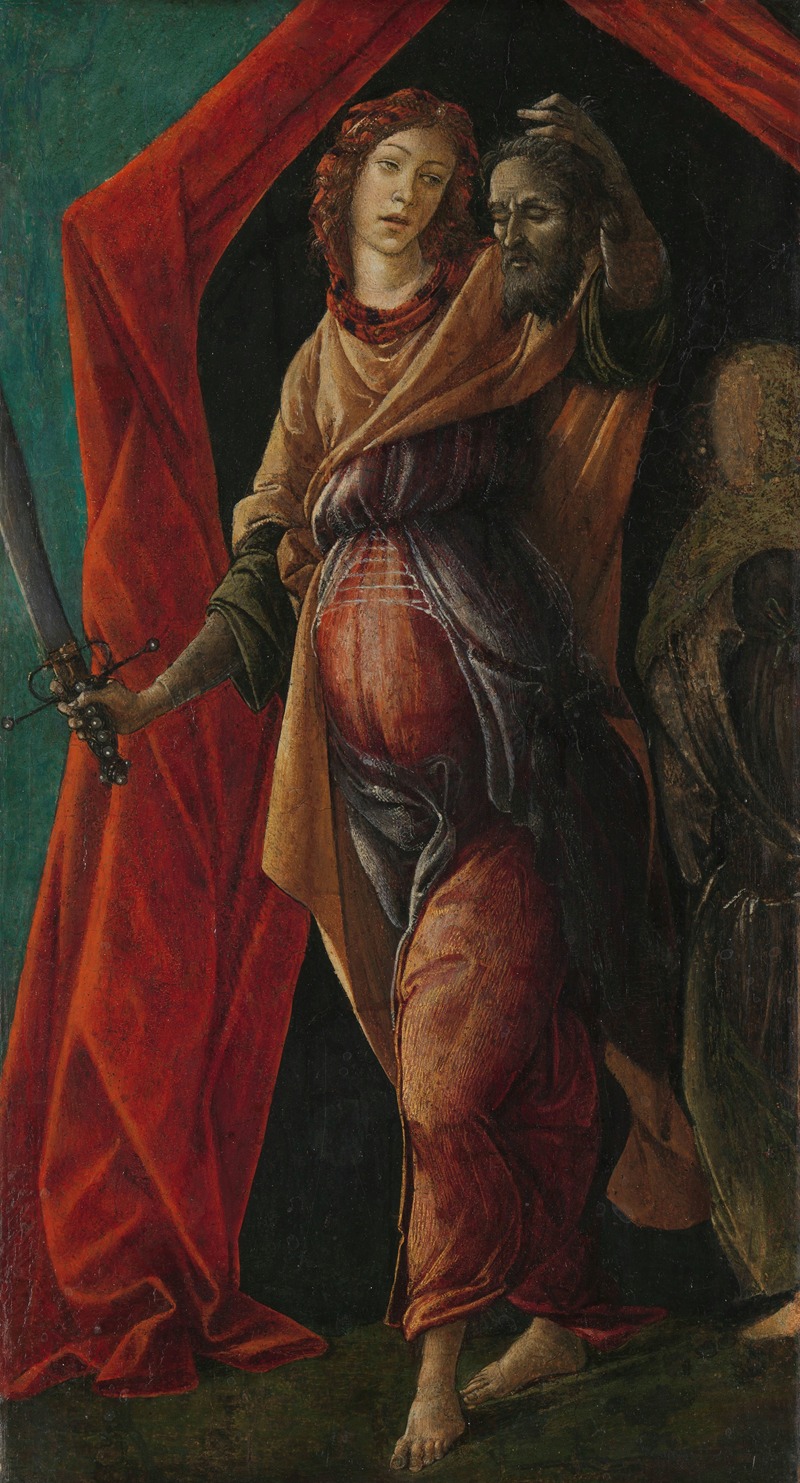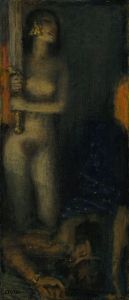
Judith with the Head of Holofernes
A hand-painted replica of Sandro Botticelli’s masterpiece Judith with the Head of Holofernes, meticulously crafted by professional artists to capture the true essence of the original. Each piece is created with museum-quality canvas and rare mineral pigments, carefully painted by experienced artists with delicate brushstrokes and rich, layered colors to perfectly recreate the texture of the original artwork. Unlike machine-printed reproductions, this hand-painted version brings the painting to life, infused with the artist’s emotions and skill in every stroke. Whether for personal collection or home decoration, it instantly elevates the artistic atmosphere of any space.
"Judith with the Head of Holofernes" is a painting by the renowned Italian Renaissance artist Sandro Botticelli. Created around 1497-1500, this artwork is a testament to Botticelli's mastery in capturing both the narrative and emotional depth of his subjects. The painting is housed in the Uffizi Gallery in Florence, Italy, which is home to many of Botticelli's masterpieces.
The painting depicts the biblical story of Judith, a Jewish heroine who saved her people by beheading the Assyrian general Holofernes. This tale is recounted in the deuterocanonical Book of Judith, which is part of the Old Testament in the Catholic and Eastern Orthodox Christian traditions. In Botticelli's interpretation, Judith is portrayed as a serene and composed figure, holding the sword in one hand and the head of Holofernes in the other. Her expression is calm, reflecting a sense of righteousness and divine justice.
Botticelli's depiction of Judith is notable for its elegance and restraint. Unlike other interpretations of this story, which often emphasize the violence and drama of the act, Botticelli's Judith is a figure of grace and dignity. Her attire is richly detailed, showcasing Botticelli's skill in rendering textiles and his attention to the subtleties of light and shadow. The background of the painting is relatively simple, drawing the viewer's focus to Judith herself and the symbolic act she has performed.
The painting is a fine example of Botticelli's late style, characterized by a more linear approach and a focus on clarity and harmony. This period of Botticelli's work reflects a shift from the more elaborate compositions of his earlier career to a more simplified and direct representation of his subjects. "Judith with the Head of Holofernes" exemplifies this transition, combining Botticelli's enduring interest in classical themes with a refined aesthetic that emphasizes the moral and ethical dimensions of the story.
Botticelli's choice to depict Judith in such a manner may also reflect the cultural and religious context of late 15th-century Florence. During this time, Florence was a city deeply engaged with religious and philosophical ideas, and the story of Judith would have resonated with contemporary audiences as a symbol of virtue and divine intervention. The painting can be seen as an exploration of these themes, presenting Judith as an exemplar of courage and faith.
"Judith with the Head of Holofernes" continues to be studied and admired for its artistic and historical significance. It offers insight into Botticelli's artistic evolution and the broader cultural milieu of Renaissance Florence. The painting remains a powerful representation of the enduring appeal of biblical narratives and their capacity to convey complex human emotions and moral dilemmas. Through Botticelli's skilled hand, Judith's story is transformed into a timeless image of strength and virtue, capturing the imagination of viewers across centuries.


















